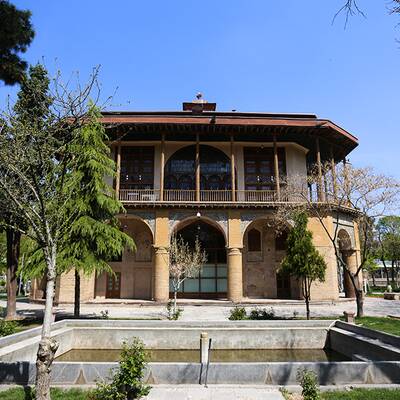Hussainia is a congregation hall for Twelver Shia Muslim commemoration ceremonies, especially those associated with the Mourning of Muharram. The name comes from Hussein ibn Ali, the third of the Twelve Imams and the grandson of the Islamic prophet Muhammad.
Hussainia and The House of Aminis is one of the historical monuments of Qazvin. It’s an exemplary house which represents Persian House concept as well. This building is built in 1858 during Qajar reign. Haj Mohammad Reza Amini was the owner of the building. Aminis Hussainia was a part of a greater mansion that was residential at first then Waqfed (is an inalienable charitable endowment under Islamic law, which typically involves donating a building, plot of land or other assets for Muslim religious or charitable purposes with no intention of reclaiming the assets) to build Hussainia.
The House and Hussainia comprise different parts. There are three parallel halls which are the most beautiful sections of the building. The mid hall is larger than the others with dimensions about 18 meters in 5 meters. there are many impressive decorations in these halls; qamariya, miniatures on the roofs, Aina Kari and stucco. Sash windows are the most impressive details of the building. The hall is rugged by the handwoven carpets and the chandeliers are hung from the ceilings.
On arrival the halls, the delicate details of the halls make you feel that you are in another world. Every corner has an impressive sight with many techniques of Persian decoration.
Subbasement of the house recently opened as Ashura museum to exhibit the old photographs of mourning of Muharram and equipment of Ta’zieh (Ta’zieh, primarily known from the Persian tradition, is a shi'ite Muslim ritual that reenacts the death of Hussein (the prophet Muhammad's grandson) and his male children and companions in a brutal massacre on the plains of Karbala, Iraq, in the year 680 A.D.)
Aminis House and Hussainia is located in Molawi Street, and there you even may get advantage of local guides to get familiar with the influences of Ashura and Mourning of Muharram on the Persian Islamic culture.









